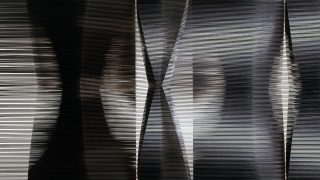Espoo Museum of Modern Art


08.02.2007 - 29.04.2007
Raimo Utriainen
Raimo Utriainen is one of the generation of artists who, through their new ideas, forms and materials, had a decisive influence on the advance of sculptural modernism in post-war Finland. From the small, figurative sculptural casts of the 1950s the artist switched at the beginning of the 1960s to cubist stylised sculptures and constructivist bronze and concrete works as well as to works welded from iron rods.
Raimo Utriainen was born in Kuopio on 24.9.1927 and is a leading pioneer in Finnish abstract sculpture. Utriainen spent his early years in Turku and began to study art at the Turku Fine Arts Society drawing school in 1947.
He also studied mathematics at the University of Turku. He continued his studies at the School of Industrial Design in Helsinki in 1948-49, switching to architecture at the Helsinki University of Technology in 1949. Four years later, in 1953, he began to study sculpture at the Finnish Academy of Art. In his art Utriainen stressed the connection between mathematics and architectural studies For him art was a symbol of technical progress and the artist “an inventor, scientist, explorer and discover”.
Utriainen is one of the generation of artists who, through their new ideas, forms and materials, had a decisive influence on the advance of sculptural modernism in post-war Finland. From the small, figurative sculptural casts of the 1950s the artist switched at the beginning of the 1960s to cubist stylised sculptures and constructivist bronze and concrete works as well as to works welded from iron rods. He also produced portraits, medallic art and at the turn of the 60s experimented with informalist expressive miniature sculptures.
From the beginning if the 1970s Utriainen began to create woks composed of steel and aluminium slats in which the sculptural entity was created by the combination of revolving, airy and transparent surfaces. As a constructivist Utriainen sought and stressed kinetic and dynamic structures expressing the experiences of time and space. Utriainen considered Kazimir Malevich, a follower of pure, conceptual forms, as one of his role models. Utriainen’s way of precisely planning a work on millimetre-squared paper stressed the link between his slatted sculptures and architecture. Already during the 1960s Utriainen was a monumentalist, a creator of large sculptures for public spaces. His works can be found in Helsinki, Turku, Tampere, Kuopio, Lappeenranta and Seinäjoki as well as abroad, particularly in Japan. In October 2006 Utriainen’s monumental sculpture Stream was erected in EMMA’s forecourt. The work is an enlargement of the Stream I sculpture from 1981.
In 1993, a year before his death (27.4.1994), Raimo Utriainen set up an art foundation and in October 2006 the foundation’s collection was placed on deposit with EMMA. The exhibition Raimo Utriainen – The resonant line presents the works in this collection and provides a comprehensive overview of the artist’s versatile production over 40 years. On display are sculptures, medals, paintings, sketches, photographs, drawings for slatted sculpture as well as personal material. Utriainen painted throughout his life but it was not until his later years that his paintings were placed on exhibition. The collection’s paintings amaze the viewer with their expressive power, forming a strong contrast to his controlled sculptural forms.
The architect Aarno Ruusuvuori was a fellow student and friend of Utriainen. In EMMA’s exhibition the constructivist works of two long-term modernists, Aarno Ruusuvuori, the designer of the WeeGee building, and Raimo Utriainen the sculptor complement one another brilliantly.